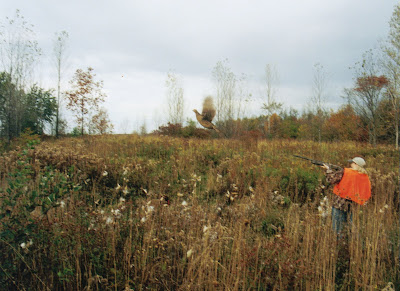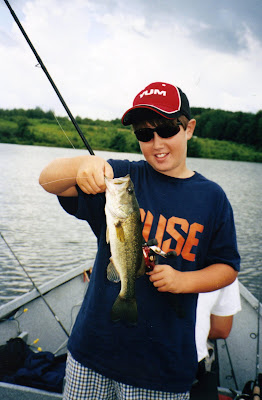batter trembling logs
glistening webs of monofilament
and take-out coffee cups
welded to rocks by frozen foam.
Wedges of beaten floes
lucid and hard
grind against my hope
of raising a rainbow
through fragmented light.
~Raymond Hrynyk

Christmas at the Staircase
Unleashed on one end by the Tug Hill Plateau, tamed on the other by Lake Ontario, the Salmon River leads a relatively short and violent life. Tumbling down the slope, twisting and turning, plowing into banks, boulders and windfalls, it lives fast and never tires. Its whitewater, eddies, ripples and pools are like strings on an instrument, creating a siren's song which draws trophy salmonids into its flow; and anglers from around the world to meet the challenge.
The performance takes place year-round. Still, sometimes it plays better than others. You see, change is what lures man and beast to this river. And December is its most beautiful canvas. Draped in a wonderland of ice and snow one day, swept clean by rising temperatures and water the next, it's a whole month of ideal steelhead habitat.
Extreme shifts in water levels orchestrate the runs. This early in the season, the river's floor is carpeted with salmon eggs blanketed by pebbles. Accelerating currents uncover this prized food source, carrying it to the fish. Indeed, all they have to do is sit there, open their mouths and caviar rushes in.
Equally important, thaws raise the water to meet the comfort levels of steelies of every temperament. Those already in the stream are emboldened by the growing habitat and get downright careless in the cloudy run-off's diminished visibility. Fish swimming near its plume in the lake are hooked by the slightly warmer temperatures of the snowmelt and charge into the swollen stream.
They're literally fish for the season. When they first enter the river, steelies are basically green-backed, silver-sided, and faintly traced in pink from head to tail.
After a couple weeks in the stream, they take on the colors that camouflage them to the limited environment. Their backs turn dark olive, their upper sides develop a wide pink or red stripe and their lower sides are silver that fade into pure white bellies. Black spots are sprinkled all over them like tiny ornaments.
Hold one, and you feel the colors of the season come to life. Releasing it puts you into the Holiday spirit.
Or, as cousin Staash, a steelheader who traces his enthusiasm to the first stocking over thirty years ago, likes to say:
"December steelhead are a gift to humankind; a sensual feast in a spiritual wrapping."
Merry Christmas.

















































 Crappies are still in Sandy Pond. They've moved out of the boat channels, creek mouths and shallow bays into open water. Many of the large females are still holding eggs. They're hitting minnows, glow jigs and small bucktail jigs; fished plain or tipped with a minnow. Work 'em slow.
Crappies are still in Sandy Pond. They've moved out of the boat channels, creek mouths and shallow bays into open water. Many of the large females are still holding eggs. They're hitting minnows, glow jigs and small bucktail jigs; fished plain or tipped with a minnow. Work 'em slow.